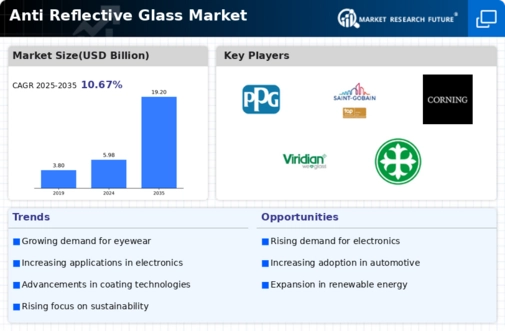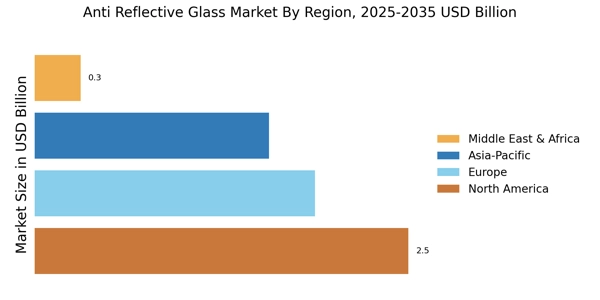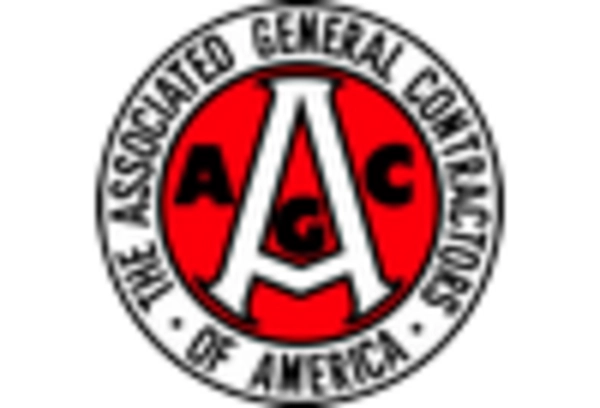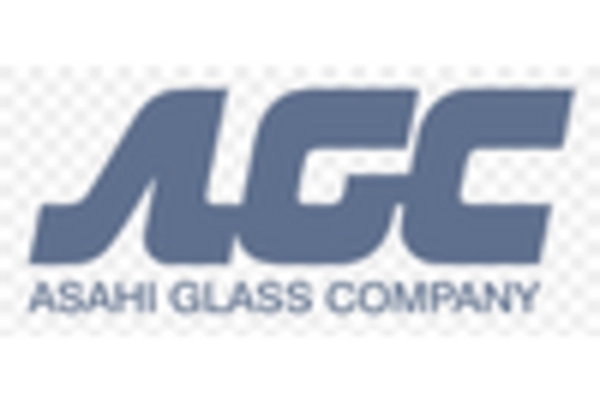Rising Demand in Electronics
The Anti Reflective Glass Market is experiencing a notable surge in demand, particularly within the electronics sector. As consumer electronics continue to evolve, the need for high-quality displays has become paramount. Anti reflective glass enhances visibility and reduces glare, making it an essential component in devices such as smartphones, tablets, and televisions. Recent data indicates that the electronics segment accounts for a substantial share of the market, driven by the increasing adoption of advanced display technologies. This trend is likely to persist, as manufacturers seek to improve user experience and product performance. Consequently, the Anti Reflective Glass Market is poised for growth, fueled by innovations in display technology and the rising expectations of consumers for superior visual clarity.
Growth in Automotive Applications
The Anti Reflective Glass Market is witnessing significant growth due to its expanding applications in the automotive sector. With the automotive industry increasingly focusing on enhancing driver safety and comfort, the integration of anti reflective glass in vehicle windows and displays is becoming more prevalent. This type of glass minimizes glare from sunlight and artificial light, thereby improving visibility for drivers and passengers alike. Market data suggests that the automotive segment is projected to grow at a robust rate, driven by the rising demand for advanced driver-assistance systems (ADAS) and infotainment displays. As automotive manufacturers prioritize safety and user experience, the Anti Reflective Glass Market is likely to benefit from this trend, leading to increased adoption of specialized glass solutions.
Increasing Focus on Energy Efficiency
The Anti Reflective Glass Market is increasingly aligned with the global emphasis on energy efficiency and sustainability. As energy costs rise and environmental concerns grow, there is a heightened demand for building materials that contribute to energy savings. Anti reflective glass plays a crucial role in this context by minimizing heat gain and glare, thereby reducing the reliance on artificial lighting and air conditioning. Recent market data suggests that the demand for energy-efficient building materials is on the rise, with anti reflective glass being a preferred choice among architects and builders. This trend indicates a strong potential for growth within the Anti Reflective Glass Market, as stakeholders prioritize sustainable solutions that align with regulatory standards and consumer preferences.
Technological Innovations in Coatings
The Anti Reflective Glass Market is benefiting from ongoing technological innovations in coating processes. Advances in nanotechnology and chemical engineering have led to the development of more effective anti reflective coatings that enhance the performance of glass products. These innovations not only improve the optical clarity of glass but also increase durability and resistance to scratches and environmental factors. Market analysis indicates that the introduction of new coating technologies is likely to drive growth in the industry, as manufacturers seek to differentiate their products in a competitive landscape. The ability to offer superior anti reflective properties will be a key factor in attracting customers, thereby positioning the Anti Reflective Glass Market for continued expansion in various applications.
Architectural and Interior Design Trends
The Anti Reflective Glass Market is significantly influenced by evolving architectural and interior design trends. As architects and designers increasingly prioritize aesthetics and functionality, the demand for anti reflective glass in buildings and interiors is on the rise. This type of glass not only enhances the visual appeal of structures but also improves energy efficiency by reducing glare and heat gain. Recent statistics indicate that the architectural segment is experiencing a steady growth trajectory, driven by the construction of modern buildings that incorporate sustainable design principles. The integration of anti reflective glass in facades and interior spaces is likely to become more common, as stakeholders seek to create environments that are both visually striking and energy-efficient. This trend suggests a promising future for the Anti Reflective Glass Market.


















Leave a Comment